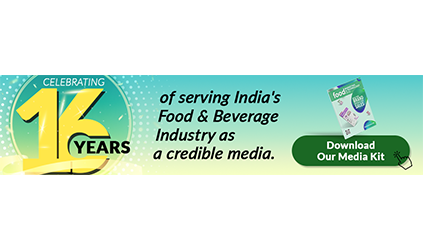Spending habits have shifted dramatically in the past few years. Armed with smartphones and apps that promise delivery in minutes, consumers now expect on-demand gratification. Q-commerce, as the phenomenon is often called, thrives on exactly that expectation. It focuses on delivering everyday essentials — groceries and, more recently, guilty pleasures like ice cream — in as little as 10 to 30 minutes. As this new model of shopping sends ripples through domestic markets, the ice cream business finds itself at a unique crossroads — a moment of opportunity paired with significant logistical challenges.
Q-Commerce Surge in India
Quick commerce is one of the fastest-growing categories in India’s digital retail market in terms of adoption. The Indian Q-commerce market was estimated at $0.3 billion in 2021 and is projected to grow to $5 billion by 2025, with a phenomenal CAGR of over 100%, as per a RedSeer report. This meteoric growth is being fueled by the demands of city dwellers who crave immediacy and convenience. While initially focused on essential items, the Q-commerce wave has expanded into indulgent categories like ice cream. Food delivery platforms have seen a 20–30% month-on-month increase in frozen dessert orders, particularly during the warmer months in metropolitan areas, according to internal data from platforms like Zomato and Zepto

Key Players and Delivery Promises in Indian Q-Commerce
India’s Q-commerce ecosystem is being served by a few major players who have revolutionised last-mile delivery:
- Zepto: Known for introducing 10-minute delivery, using micro-warehouses across metro cities to ensure quick turnaround.
- Blinkit (owned by Zomato): Offers 10-minute delivery in popular zones, including frozen desserts.
- Swiggy Instamart: Guarantees delivery in 15–30 minutes with curated frozen SKUs and robust cold chain systems.
- Big Basket BB Now: Delivers essentials and frozen items within 30 minutes in select cities, including Bengaluru, Mumbai, and Hyderabad.
- DoorDash India: Still in pilot mode, experimenting with Q-commerce focused on restaurants and frozen items in a few metro cities.
To maintain speed and trust in the supply chain, these companies are continually enhancing cold chain logistics, localized warehousing, and AI-based demand forecasting.
Top 10 Cities Driving India’s Q-Commerce Boom
Tier-1 cities are becoming the primary growth centres for Q-commerce in India. Cities showing the fastest adoption and growth include:
- Bengaluru — A tech-savvy, young generation of college students has driven up demand for late-night ice cream deliveries.
- Mumbai — Traffic congestion and dense urban areas make courier services highly valuable.
- Delhi NCR — Including fast-growing markets like Noida and Gurugram, where Q-commerce is growing at lightning speed.
- Hyderabad — A growing population of digital natives is fuelling demand for quick delivery.
- Pune — A noticeable uptick in premium dessert and frozen category sales, particularly among young professionals.

The Perfect Moment for Ice Cream
This is the moment for ice cream. It’s more than just a dessert, it’s comfort, a mood booster, an indulgent escape. And now, apps like Swiggy, Zomato, Zepto, and others are racing to deliver these frozen treats in just 10–20 minutes. This ultra-fast service doesn’t just satisfy cravings, it creates them. One fascinating quirk of selling ice cream via Q-commerce is the timing of customer cravings. People often enjoy ice cream at night, as a midnight snack, and these cravings tend to be impulsive. There’s a small window of opportunity, maybe 10 or 15 minutes. If the product doesn’t arrive in that time, the mood shifts, the desire fades, and the order may be cancelled. This behaviour is a double-edged sword. If brands and delivery platforms can capitalize on that brief window with rapid service, they win a sale and perhaps a repeat customer.
Miss it by a few minutes, and the moment is lost.
Innovation, Elegance, and Sustainability
Today’s consumers want more than vanilla. They want sundaes, sodas, layers of sauces, nuts, brownies, and whipped cream ,delivered with precision. Brands that can transport such premium treats in tamper-resistant, temperature-stable packaging while preserving their visual appeal and texture will have a competitive edge. However, challenges remain. Ice cream is extremely sensitive to temperature. Even a short lapse in the cold chain can lead to spoilage or texture loss. Dedicated storage, specialized packaging, and trained staff add significant costs — often beyond what consumers are willing to pay for a single tub. Q-commerce also relies heavily on localized stock, housed in dark stores or micro-warehouses. Balancing stock levels to minimize both waste and lost sales is a logistical puzzle. Visibility is another hurdle ,with thousands of items vying for consumer attention, good imagery, reviews, and strategic positioning are essential. Compounding this is the sustainability concern. Ice cream packaging often involves plastic and thermocol, raising environmental red flags. As consumers become more eco-conscious, brands are under increasing pressure to adopt sustainable packaging alternatives.
Conclusion
Quick commerce has rewritten the rulebook, despite being a relatively recent entrant in the retail space. For the ice cream business, it’s a golden opportunity to capture consumers at their emotional peak ,the very moment they crave comfort and indulgence.But seizing this opportunity demands speed, sophistication, and operational excellence. Brands that deliver not just ice cream but a memorable, convenient experience ,quickly, safely, and sustainably will lead the way. For those who lag behind, the opportunity may melt away before they even get started.
About the Author
General Manager, Sri Srinivasa Dairy Products Pvt Ltd, Hyderabad | IRCA Certified Lead Auditor – FSMS & QMS



